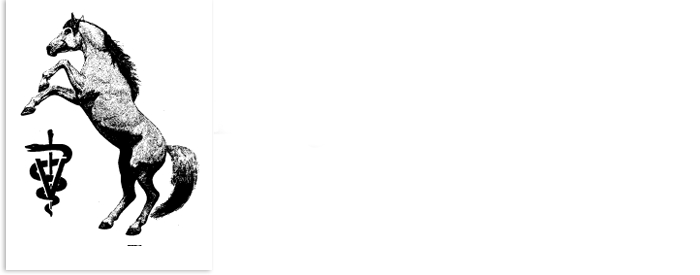What is a Pre-Purchase Examination?
A pre-purchase exam is a complete physical and lameness evaluation performed by a veterinarian for a potential buyer of a horse. The purpose is to determine what if any health or lameness problems the horse has today and what problems it may develop in the future. People often say that a horse either passed or failed a pre-purchase examination. This is not the case. THE PRE-PURCHASE EXAM IS NOT A PASS / FAIL SITUATION. With the exception of 2 horses, I have found some problem worth discussing with the potential buyer in every pre-purchase exam I have performed. Rather, at the end of the exam, the potential buyer must determine if they can live with the problems I have found or if they cannot live with those problems. If they can, they buy the horse. The veterinarian will often provide a letter describing the results of his exam after it is completed. In my practice, I carry a computer and printer in my vehicle so results can be printed and handed to the buyer on the spot.
The exam is divided into three parts, the physical exam, the lameness exam and any additional tests including blood and drug tests and x-rays. The first two parts take about an hour to perform. During the physical exam the doctor listens to the heart, lungs and intestines, takes the temperature of the horse, checks the eyes and teeth, and will usually give you an estimate of the horse's age. If the horse was raced and is tattooed under the upper lip, it makes it much easier to determine a horse's age.
The balance of the time is spent on the lameness exam. The horse is palpated over the entire body. The doctor is looking for any pain heat or swelling. The back is palpated along the spine and muscles to detect any back pain. Each leg is palpated top to bottom. Each joint in each leg is evaluated for increased joint fluid or pain on flexion. The tendons and ligaments in each leg are evaluated for pain on palpation. Next each hoof is examined. Each hoof is picked out. Then the doctor will apply a hoof tester to the sole of each hoof. A hoof tester looks like a big pair of pliers. It allows the veterinarian to apply point pressure to specific areas along the sole of the hoof. If the horse has a sore spot in the sole of the hoof, the horse will try to pull away when pressure is applied.
Once the hooves have been inspected, flexion tests are performed on each leg. Flexion tests involve flexing a joint up for a period of time. Then the horse is trotted off. If the horse limps in the first few strides that is considered an indication of soreness in that area. In the front legs individual flexion tests are performed on the knee and fetlock joints. In the hind legs only a hock flexion test is typically performed. The hind legs in horses are such that if you flex one joint, all the joints are flexed so is difficult to evaluated individual joints.
Following the flexion tests, the horse is usually either tacked up and ridden or put on a lunge line. Then the horse is asked trot and cantered in both directions.
The third part of pre-purchase involves any blood tests and x-rays which may be helpful in discovering sources of illness or lameness. In the majority of pre-purchase exams, the front hooves are x-rayed. This is to determine if there are any changes in the navicular bone typical of navicular disease or if there are any indications of ring bone or problems in the coffin bone. If during the lameness exam another area shows abnormality, that area will also be x-rayed. The other most common area to x-ray are the hocks. Many performance horses develop arthritis in the hocks. While such arthritis does not stop their athletic career, it presence, called Bone Spavin, is important to know when making a buying decision.
The potential buyer may also elect to have blood tests run on the horse. A complete blood count, which checks for anemia and infections, and a chemistry profile, which checks for indications of liver, kidney or muscle disease, are two of the simplest tests to run.
A drug screen may be run. This tests for many of the drugs used to mask symptoms of lameness or drugs used to sedate which present a picture of a calm horse in order to fool a potential buyer. The drug screen at present is somewhat cumbersome because the results are often not available for at least several days.

